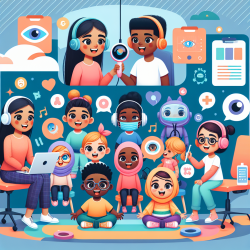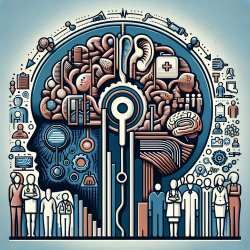Building Capacity in Health Professional Education: Lessons from the Global Health Service Partnership
In the field of speech language pathology and broader health professions, continuous improvement and skill enhancement are crucial. The Global Health Service Partnership (GHSP) offers a compelling model for how partnerships can enhance professional education and training, particularly in resource-limited settings. This blog explores the outcomes of GHSP's innovative model and how practitioners can apply these lessons to improve their own skills and contribute to global health capacity building.
Understanding the GHSP Model
The GHSP was established as a collaboration between the US government and several African countries to address the critical shortage of healthcare professionals. From 2013 to 2018, GHSP deployed 186 US health professionals to 27 institutions across five countries: Malawi, Tanzania, Uganda, Eswatini, and Liberia. These professionals served as educators, helping to train over 16,280 unique trainees.
The program focused on enhancing pre-service and in-service education for medical, nursing, and midwifery students. GHSP educators worked alongside local faculty, integrating into institutional roles as lecturers, mentors, and clinical supervisors. This model not only increased the quantity of trained professionals but also significantly improved the quality of training through personalized learning, mentorship, and the use of innovative teaching methods.
Key Outcomes and Implications for Practitioners
The GHSP model demonstrates several key outcomes that can be valuable for practitioners looking to improve their skills:
- Supportive Learning Environments: GHSP educators fostered supportive classroom and clinical environments, emphasizing interactive and personalized learning. Practitioners can replicate this approach by creating engaging and supportive learning spaces in their own practice.
- Bridging Theory and Practice: The program provided a bridge between theoretical knowledge and clinical practice through skills labs and simulations. Practitioners should seek opportunities to integrate practical experiences into their training, enhancing their ability to apply theoretical knowledge in real-world settings.
- Mentorship and Role Modeling: GHSP educators served as role models and mentors, offering guidance and support to trainees. Practitioners can benefit from seeking mentorship opportunities and, in turn, mentoring others to foster a culture of continuous learning and professional growth.
Encouraging Further Research and Engagement
The success of the GHSP model underscores the importance of partnerships and collaboration in health professional education. Practitioners are encouraged to engage in further research to explore how similar models can be adapted and implemented in different contexts. By participating in global health initiatives, practitioners can contribute to building capacity and improving health outcomes worldwide.
For those interested in learning more about the GHSP model and its outcomes, I highly recommend reading the original research paper: Partnering to Build Human Resources for Health Capacity in Africa: A Descriptive Review of the Global Health Service Partnership’s Innovative Model for Health Professional Education and Training From 2013-2018.










